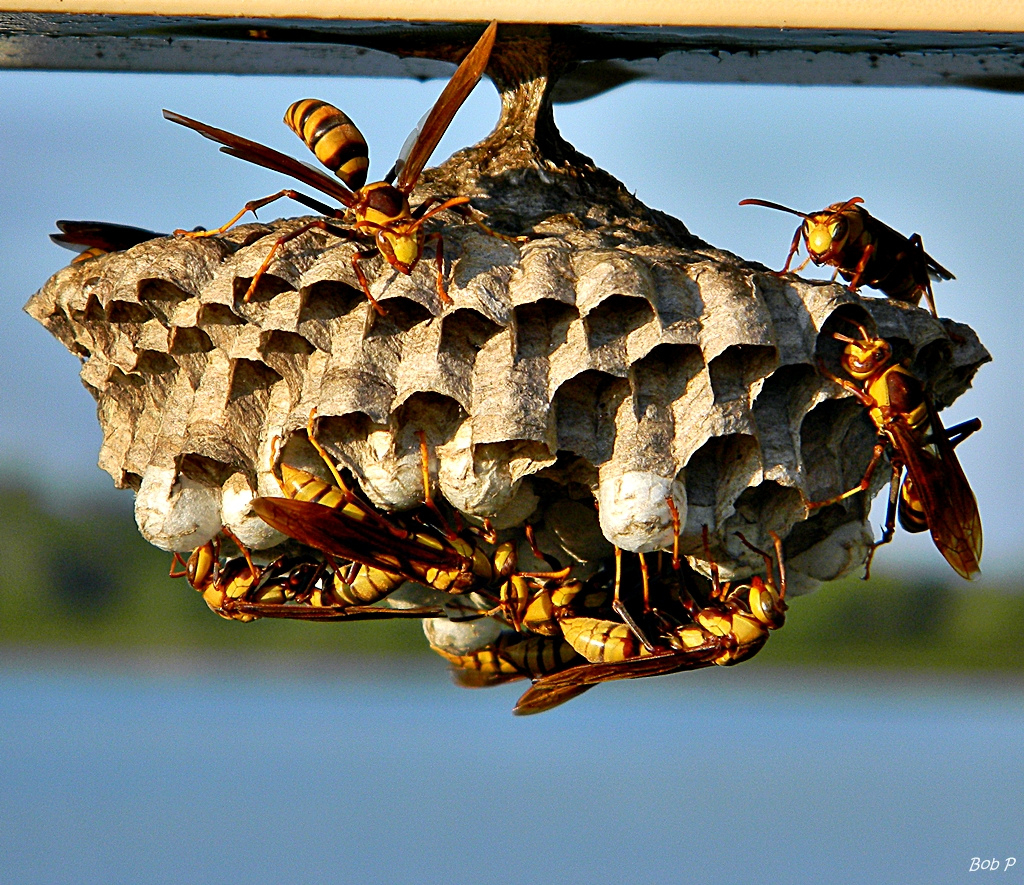They have a bad reputation thanks to carrying 'weapons' on their bums — but wasps are doing more for the prairie ecosystem than most people realize. Dr. James Tansey, an entomologist with the Saskatchewan Ministry of Agriculture, says stinging wasps like yellowjackets and bald-faced hornets are actually important contributors to biodiversity.
“They’re generalist predators and they are quite effective,” said Tansey. He noted that wasps and hornets are similar to predators like bats and dragonflies in that they hunt human-targeting bloodsuckers like mosquitoes, as well as consuming large numbers of garden pests.
“If you want to see them doing a real number on aphid populations, this is an excellent time of year," he suggested.
At places like Buffalo Pound, Tansey said the evidence is easy to spot: Aquatic plants on the boardwalk are often literally covered in aphids — and crawling with wasps grateful for the protein.
“There will be thousands of stinging wasps, from a few different families, happily munching on aphids,” he said. “And the humming is actually pretty hypnotic if you’re walking out there.”
But pest control isn’t their only ecological role. Wasps also feed on nectar and visit flowers, inadvertently transferring pollen as they go.
“They’re actually important pollinators,” Tansey said. “They’re part of that larger system, just like everything else.”
That balance is one reason to resist the urge to eliminate wasps on sight — especially when some of the bugs we fear aren’t dangerous at all.
“There are some primitive wasps in Saskatchewan called horntails,” he said. “They’re large, noisy flyers with big ovipositors sticking off the back end, so they do look quite scary — but they don’t sting or bite.”
Instead of attacking people, horntails lay their eggs in dead or dying trees, helping to break down wood as their larvae feed and serving an important role in the circle of life.
As for true wasps, Tansey says one species in particular is worth keeping an eye out for: The European paper wasp, an invasive species recently spotted in Regina.
“It looks a little like a yellowjacket, but it’s more slender, has longer legs, and a distinctive way of flying,” he said. “Their nests are open-celled and hang like a sunflower upside down, so they can be interesting to spot because they're quite different than the ground nests of yellowjackets or the tree nests of bald-faced hornets."

While paper wasps are not as aggressive as native wasps, Tansey says their spread is worth tracking — and he wants the public to report sightings directly.
“If people do see these, please contact me,” he said. “It’s good to know how far and wide they’re getting.”
Dr. Tansey can be emailed at james.tansey@gov.sk.ca.
